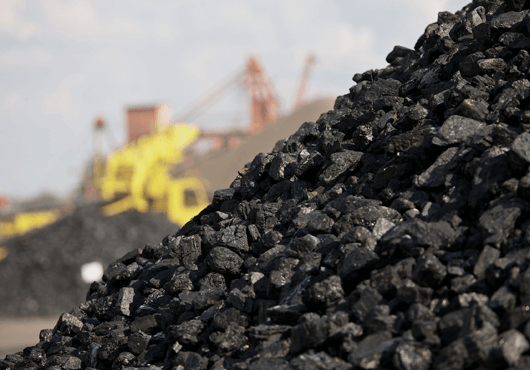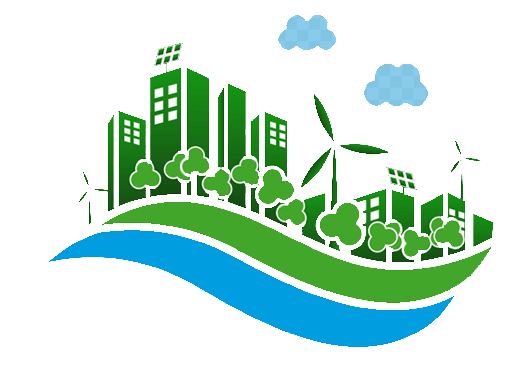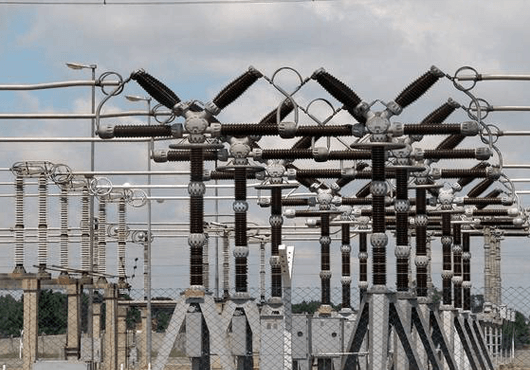National Cement Company (NCC)
Best Cement Company !The National Cement Company (NCC), founded within 2006-2008, is a wholly owned subsidiary of Hayel Saeed Anam Group of Companies (HSA)—the most deeply rooted and pioneering economic, industrial and commercial group in the Republic of Yemen. As the first privately owned company operating in cement manufacturing and production in Yemen, NCC has always contributed and would continue to contribute effectively in affecting a sustainable development for our homeland.
Learn More
Environment Friendly
Coal
Coal Source of Energy-Generation
- Coal was used as source of energy in the nineteenth century. It is a hard substance in black or brown color and 90% of it is composed of carbon. It is the result of the conversion of organic compounds and dead plants that were deposited millions of years ago. These compounds piled at the bottoms of swamps in which air hardly existed. Thus, organic compounds did not decompose because oxygen was available in small amounts.
- Coal is extracted from mines that are dug deep into the ground. Once extracted, it lifted into the surface of the earth. Sometimes, this process is done in open mines by removing dirt and rocks that cover coal mines. Although safety and precaution measure have improved, disasters still take place every now and then. Sometimes, miners, being locked in mines, die because it is not possible to get them out of these deep underground locations.
- Coal is available in many parts of the world. Coal exists in large amounts, a fact which coal experts have estimated that coal reserves could suffice the world for at least 400 years to come. Currently most coal uses are focused in the generation of electricity ( from power generation plants) and as a raw material for the production of steel (that is, as an additive to iron).

Coal As Eco Friendly Compound?
- It seems that the world is soon going to reach a new era where clean energy technologies would be used. One is the use of coal. It is also important to realize that the use of coal to generate electric power should not be considered as a nightmare to the environment. Thus, piles and large quantities of coal which are distinguished by their black color would shape the future of energy production in the whole world, as predicted by the US Energy Corporation.
- It is expected that in 2030 the world's consumption of fossil fuel— as the main source of greenhouse gases around the Earth— would account for about 10.6 billion tons per year, a figure which is twice the amount of burned fossil fuels in the 2003. Yet, Mr. Mike Maid, former director of The Technological Development for Energy Management of the United States of America stressed that coal has become the most dominating source for of electricity generation and should not be seen as a cause for harming the environment in the future. Currently, Mr. Mike is the senior CEO for the Future Energy Project. This giant Project is jointly funded by the Technological Development for Energy Management and another 11 US pioneering companies specialized in electric power production. The total budget of the Project is estimated at an amount of $ US 1 billion to be used in the construction of the first electric power generation plant by using clean coal technologies in the world. In such a power station, gas emission is supposed to reach zero rate. In addition, it is anticipated that this giant plant, with a generation capacity of 275 MW, would start operating as a model example for a new type of electricity generation plants run by clean coal technology without polluting the air.
- Thus, it is now possible to use the carbon in coal to extract oxygen from water in order to produce clean hydrogen. The Future Energy Project intends to separate hydrogen atoms by slowly heating underground coal within a high state of pressure and in the presence of pure oxygen. This process is called gasification. Following that, the turbine of the resultant hydrogen is used to produce electricity. With respect to resulting emissions, the Project would inject the carbon dioxide resulting from the burning of coal to the underground while other pollutants would be converted into solid materials and buried underground. The Project uses gasification as a launching point for burning hydrogen alone out of a gas mixture. Also carbon monoxide is to bond with steam to produce additional quantity of hydrogen. Carbon dioxide would be injected into a depth ranging between 2700 and 16, 000 feet underground in saltwater tanks. The US Project aims at significantly reducing carbon dioxide emissions. This process would be an example for other electric power production projects to follow suit. The US Government is to set limits and regulations governing the emissions of carbon dioxide to be adopted and adhered to by electric power production projects in the United States. These limits and regulations should be applied in other regions of the world, especially in Canada and Europe. Friedman stated that experts have agreed upon the notion of "Locking up carbon" cannot be a solution for long. But it could be a drive for separating carbon, a process that could be carried out over a period a long period ranging between 50 to 100 years. Emphasizing this notion, he stresses "Actually, we must implement this idea so that we could have another option besides the burning of coal in the future."
Arabic Countries
Coal
Recent Increasing Interest Among Several Arab countries to Re-Use Coal; some of which are as follows:
United Arab Emirates :
An economic report has elaborated that the cement companies in the UAE started to import coal in order to use it in running their furnaces in cities such as Ras Al Khaimah and Fujairah. Dubai Electricity and Water Authority received nine competitive offers from international companies specialized in using and applying clean coal technology in the production of electric power. This was in response to the tender announced by Dubai Electricity and Water Authority on in November, 2010. Mr. Saeed Mohamed Al Tayer, Dubai Electricity and Water Authority's BOD Deputed Member and CEO of the Dubai Electricity and Water, stated, "This study marks the essential and most important step towards the implementation of the Strategy for Diversifying Energy Sources approved by Dubai Supreme Energy Council. The Strategy stipulates that coal should be used as part of the energy portfolio in Dubai. It aims at diversifying the source of fuel in order to secure the supply of energy and meet Dubai's increasing need for energy. Mr. Al Tayer added that a tender would be prepared for the construction of the first electric power generation plant by using clean coal technologies, which would be owned by Dubai Electricity and Water. Emphasizing this notion, he added, " Bid evaluation process would be carried out within the period from January to February 2011. The Authority would adopt the best international methods and practices for the construction of the electric power generation plant using clean coal."Oman :
In 2009, Oman entered into two technical and financial consultation contracts for the construction of Al Duqem electric power plant whose production capacity accounts for 1000 MW. Other steps are being carried out to pave the way for the erection of the first electric power plant to be fueled by coal in the Sultanate of Oman.Egypt :
The Egyptian Ministry of Electricity and Energy has taken the decision to revert to the use of coal as one of the quick and cheap fuel alternatives to secure energy needs for Egypt's future projects. As such, the Ministry has commenced to conduct studies on the notion of establishing the first giant Egyptian electricity station run by coal in Safja area. It is expected that the station would have a production capacity amounting up to 1950 MW.It is noteworthy that coal for running the station would be exported. It stands to reason that the idea of constructing coal-operated electricity stations is the outcome of realizing that the new technology has made coal-powered stations and plants some of the best practices for protecting and conserving the environment. They also have less harmful emissions than those stations run by fuel oil and diesel.Yemen Intention to Generate Electricity by Using Coal :
- In 2010, the Yemeni Government asked the Mackenzie Consultant Company to carry out a feasibility study on the energy sector in Yemen. The study centered on the importance of introducing a new method for electric power generation. This is by using coal. This is so because coal has an economic feasibility and scientific experiments have shown that coal is cost-effective and is beneficial for private sector cement plants.The 2010 study has shown that Yemen falls short in meeting energy demand by 25% in the rush hour. It has also elaborated that that the electricity service delivered by the Public Electricity Corporation to beneficiaries does not even exceed 50% of the total population in need of that service albeit that the Government subsidizes the electricity sector by approximately 60% of its total costs and an annual amount of $ 550 US dollars.
- In 2012, the Coalition Government forwarded a program to the House of Representatives; the program set a number of measures to address Yemen's various imbalances. One of the remedies to the imbalance of the electricity sector—which have escalated even more since the 2011 crisis—was to repeal oil and gas subsidies.This is by expanding electric power generation through the ultimate use of available natural gas. Another possibility was to bridge the gap of the increasing demand of energy by using coal in electric power generation.
- In 2012, the Coalition Government, represented by the Ministry of Electricity and Energy, actually signed a Memorandum of Understanding with the Chinese National Corporation for Electrical Equipment (CNEEC) to build two plants for electric power generation; the first one, located at Aden Governorate, has a 600 MW generation capacity, the other at Hodeida Governorate with a (600) MW generation capacity. Both plants would operate by using the "filtered coal" as an eco-friendly source of energy.
Global Statistics
Coal
30.3% of world energy is produced by coal. Coal is used to produce 42% of electricity in the world.
Giant Electric Power Producers by Using Coal Worldwide ( 2008) :
| Country | Coal-Based Electric Generation in 2008 ( GG/ hour) | Share of World Total Production (%) |
|---|---|---|
| China | 2, 733, 000 GWh | 33.1% |
| USA | 2, 133, 000 GWh | 25.8 % |
| India | 569, 000 GWh | 6.9 % |
| Germany | 291, 000 GWh | 3.5 % |
| Japan | 288, 000 GWh | 3.5 % |
| South Africa | 241, 000 GWh | 2.9 % |
| Australia | 198, 000 GWh | 2.4 % |
| Russia | 197, 000 GWh | 2.4 % |
| Korea | 192, 000 GWh | 2.3 % |
| Poland | 143, 000 GWh | 1.7% |
| Other Countries | 1, 278, 000 GWh | 15.6 % |
| World Total | 8, 263, 000 GWh | 100% |
| ource: Key World Energy Statistics ( EIA: 2010) | ||
Giant Coal Producers in the World ( 2011) :
| Country | Coal Production ( in metric tons) | Share of World Total Production (%) |
|---|---|---|
| China | 3,576 MT | 45.9 % |
| USA | 1, 004 MT | 12. 9 % |
| India | 586 MT | 7. 5 % |
| Australia | 414 MT | 5.3 % |
| Russia | 334 MT | 4.3 % |
| South Africa | 253 MT | 3.3 % |
| Germany | 189 MT | 2.4 % |
| Poland | 139 MT | 1.8 % |
| Korea | 117 MT | 1.5 % |
| Other Countries | 795 MT | 10.3 % |
| World Total | 7, 783 MT | 100% |
| Source: 2012 Key World Energy Statistics ( EIA: 2012) | ||
Percentage of Coal Use in Electric Power Production vs. other Type of Fuels Worldwide :
Electric Power Production by Using Coal Worldwide ( in 2008) :
| Country | Coal Production in 2008 | Share of World Total Production (%) |
|---|---|---|
| China | 2, 733, 000 GWh | 33.1% |
| USA | 2, 133, 000 GWh | 25.8 % |
| India | 569, 000 GWh | 6.9 % |
| Germany | 291, 000 GWh | 3.5 % |
| Japan | 288, 000 GWh | 3.5 % |
| South Africa | 241, 000 GWh | 2.9 % |
| Australia | 198, 000 GWh | 2.4 % |
| Russia | 197, 000 GWh | 2.4 % |
| Korea | 192, 000 GWh | 2.3 % |
| Poland | 143, 000 GWh | 1.7% |
| Other Countries | 1, 278, 000 GWh | 15.6 % |
| World Total | 8, 263, 000 GWh | 100% |
Global Stations
Coal
Some Examples for Electric Power Production by Using Coal; some countries' total capacity exceeded 2000 MG only. :
| Capacity MW | Location | Country | Plant |
|---|---|---|---|
| 1,560 | 51°23'14"N 03°24'16"W | UK | Aberthaw Power Station |
| 2,160 | 36°16'53"N 80°03'37"W | USA | Belews Creek Power Station |
| 3,499 | 34°07'23"N 84°55'13"W | Bowen Power Station | |
| 2,600 | 36°23'29"N 87°39'17"W | Cumberland Power Plant | |
| 2,013 | E. C. Gaston Power Station | ||
| 2,600 | 38°56'09"N 82°07'00"w | Gavin Power Plant | |
| 3,340 | 38°22'19"N 87°46'02"W | Gibson Generating Station | |
| 4,000 | 36°24'06"N 126°29'30"E | S.Koria | Boryeong Power Station |
| 4,000 | 34057'02"N 127°49'19"E | Hadong Power Station | |
| 3,240 | 34°54'37"N 128°06'33"E | Samcheonpo Power Station | |
| 3,240 | 37°14'17"N 126°26'09"E | Yeongheung Power Station | |
| 2,100 | 25°56'38"S 29°47'22"E | South Africa | Arnot Power Station |
| 3,600 | 25°57'50"S 29°20'14"E | Duvha Power Station | |
| 2,000 | 26°01'59"S 29°36'00"E | Hendrina Power Station | |
| 4,116 | 26°05'24"S 28°58'17"E | Kendal Power Station | |
| ===== | |||


